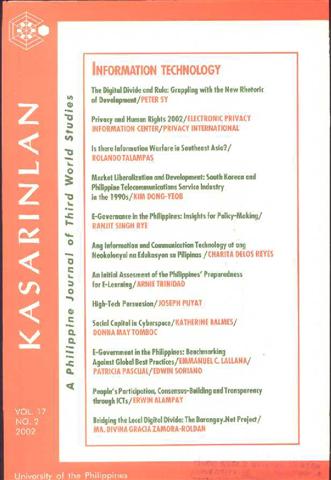People's Participation, Consensus-Building and Transparency through ICTs
Abstract
E-government is a two-edged sword. It has the power to include and exclude political participants as highlighted by the role of ICTs, especially the mobile phone technology, in the successes and failures of the recent People Power uprisings. A close comparison of EDSA 2 and 3 reveals how the digital divide could engender social divide. This makes technological intermediaries (traditional and social) crucial in bridging the gap between the information ‘haves’ and ‘have-nots’. To expedite the adoption of Internet among LGUs, the Philippine government embarked on the strengthening of the National Information Technology Plan 2000 (NITP 2000) and the Government Information Systems Plan (GISP) in 1994. Success stories of the undertakings include the Naga City public library and the information kiosks of Social Security System (SSS) and the Department of Agriculture (DA). It is observed that, in terms of e-government, the potential of cellular phone applications to foster participation and social cohesion is more pronounced compared to the e-mail and the Internet.
How to Cite
ALAMPAY, Erwin.
People's Participation, Consensus-Building and Transparency through ICTs.
Kasarinlan: Philippine Journal of Third World Studies, [S.l.], v. 17, n. 2, oct. 2007.
ISSN 2012-080X.
Available at: <https://journals.upd.edu.ph/index.php/kasarinlan/article/view/1663>. Date accessed: 24 sep. 2025.
Section
Research Reports
By submitting a manuscript, the authors agree that the exclusive rights to reproduce and distribute the article have been given to the Third World Studies Center.



